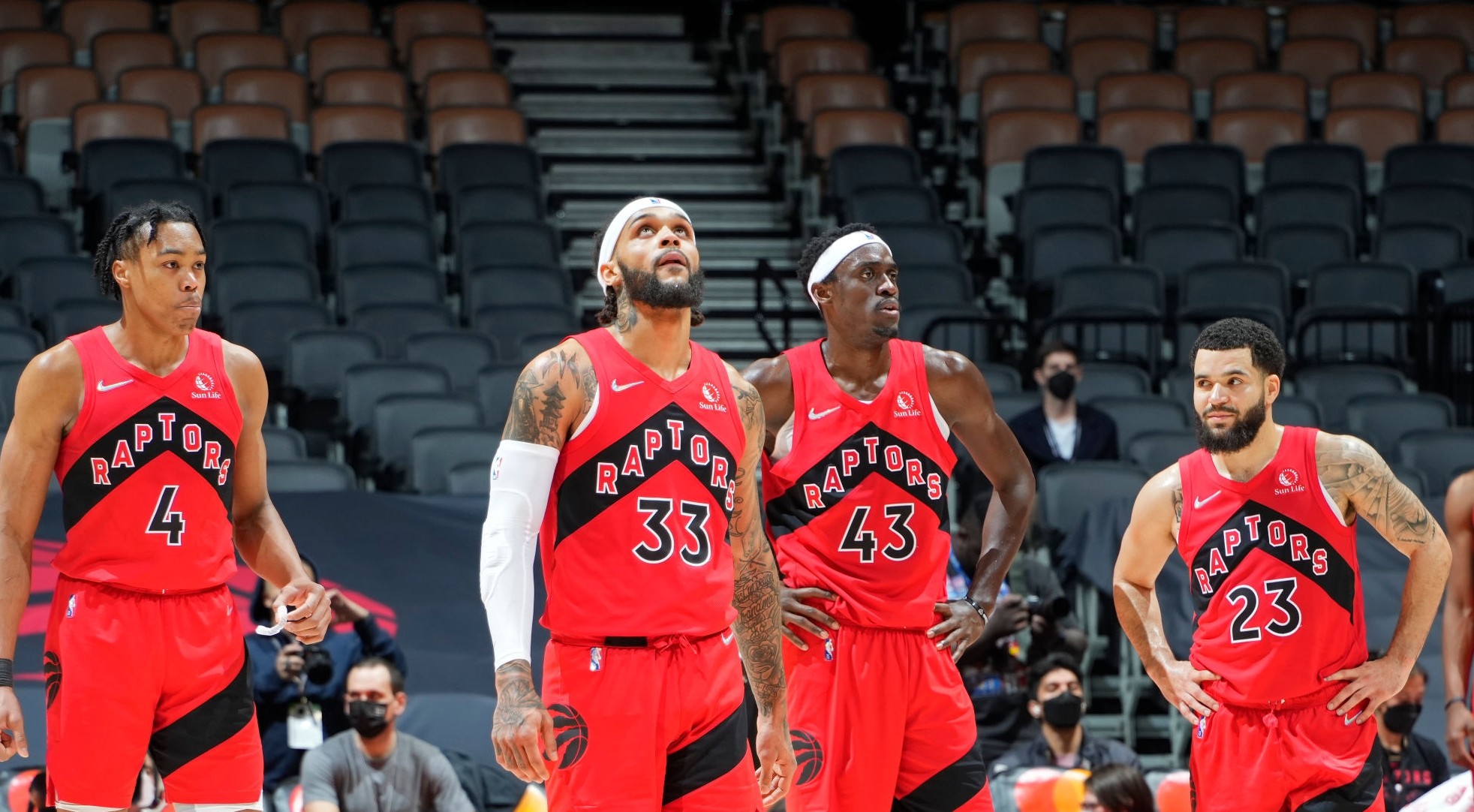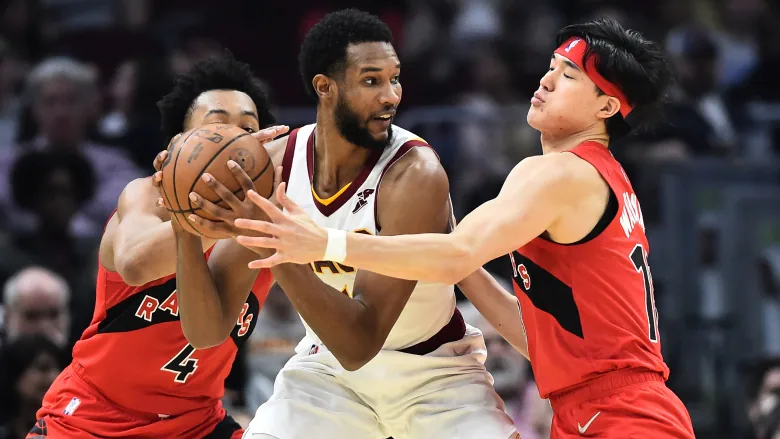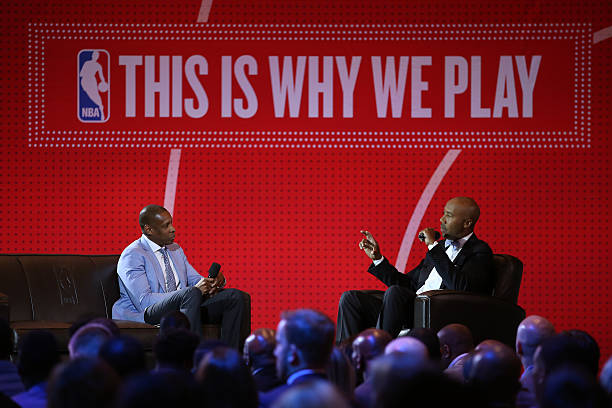Though all chess players use the same pieces, abide by the same rules, the best developed their own distinct paths to victory. Mikhail Tal was a poet, thoughtlessly hurling his own pieces at his opponent for advantages, more aesthetic than positional, drilling into cracks and blasting them open for breathtaking finishes. Jose Raul Capablanca was an intellectual, striving for the perfect game as an objective measure, irrespective of his opponent. Anatoly Karpov was a strangler, ignoring his own aims and focusing instead on abusing his opponents’, seizing every inch they allowed until there was no space left to breathe.
Basketball works in much the same way. There are countless paths to win a basketball game. Most teams, like chess players, have an identity. They may still be comfortable playing on the terms of their opposition — even Karpov knew how to sacrifice a piece to spectacular effect when the situation demanded it — but they’re at their best, most Platonic selves when not just conforming to but in fact defining their own identities.
All this to say: how do the Toronto Raptors win basketball games? Recently, the answer is not so much at all. But wins are fun to dream of! And the Raptors are a good team when they have even one shooter available who is, you know, actually making shots. When they’re fully healthy, they’ve proven to be a borderline great team, with a top-10 point differential against top-10 teams. Furthermore, many of their wins can be grouped into a few different categories. They’re starting to have one main identity while remaining comfortable, at times, in a few others.
Possession basketball
At their core, the Raptors are a possession-based basketball team. Nick Nurse has said multiple times that research from their analytics team has uncovered a glitch in the basketball system: if a team finishes with five or more possessions than its opponent, it has approximately a 70 percent chance of winning. The Raptors seem to have assembled a basketball team specifically in order to chase that statistical advantage. Almost the entire team is six foot nine with a much longer wingspan and quick hands to force turnovers. Those that aren’t that height are Fred VanVleet and Gary Trent jr. — third and fourth in the league in deflections per game. The Raptors don’t really have positions on offense, which can limit the half-court performance from time to time, but is critical in sparking transition attempts after forcing turnovers. The Raptors seek to steal possessions however they can: attacking the offensive glass, forcing turnovers from their opponents, and limiting turnovers of their own.
It’s kind of been working.
They’re second in offensive rebounding and first in deflections as a team, and they average more than five field goal attempts per game more than their opponents. Now, that hasn’t allowed the Raptors to win 70 percent of their games, but it has been an advantage. In the 39 games when the Raptors have five or more extra field goal attempts, they are 22-17. Because that doesn’t include free throws (which battle the Raptors often lose), it is probably misleading as a pure indication of the possession gap. if you add free throw attempts (dividing by two) to field goal attempts and then check games in which the Raptors have five or more added shooting possessions, they are 23-14. Still not 70 percent, but closer! (To be exact, 62 percent. Toronto’s winning percentage on the season is 53 percent, as a point of comparison.)
There have been some real doozies. On Oct. 22 of 2021, the Raptors pounded the Boston Celtics 115-83. They gathered 21 offensive rebounds and forced 25 turnovers. The game was a no-contest from start to finish. But Toronto’s possession-based identity doesn’t always mean a massacre. Sometimes it’s the only way the Raps can survive against a hot team. Against the Chicago Bulls on Feb. 3, DeMar DeRozan shot 14 for 14 from the free throw line, and Nikola Vucevic dropped 30 points. Chicago outshot Toronto from all areas of the floor, but Toronto’s 22 offensive rebounds kept them alive. Eventually, the Raptors won in overtime after Scottie Barnes tied the game with 0.7 seconds remaining on a tip-in.
So too have there been some letdowns. In fact, Toronto’s largest possession-gap game was on Feb. 14 against the New Orleans Pelicans. The Raptors took 18 more field goal attempts and 15 more free throws. Should be an automatic win, right? Wrong. Gary Trent jr. and VanVleet combined to shoot six for 17 from deep, and the rest of the Raptors were two for 17. Trent also shot zero for seven from inside the arc. OG Anunoby didn’t make a 2-pointer, either. Scottie Barnes shot two for eight from inside the arc. Meanwhile the Pelicans found open shots time and again, with almost total ease. Simply attempting more shots isn’t always enough to overcome other deficits. The Raptors just last night lost a game to the Cleveland Cavaliers in which they attempted nine more shots and three more free throws. They shot, of course, 24 threes and made a pitiful six. Sometimes the complex analytical algorithm can’t overcome basic math.
Sometimes, no matter how hard Tal looked for a piece sacrifice it simply wasn’t available. He had to win grinding endgames, too. So too do the Raptors have some alternative routes to victory.
Half-court dominance
Half-court dominance didn’t look like it was going to be an option for Toronto entering the year. The Raptors had a sloppy half-court offense last year and of course lost Kyle Lowry in the offseason. It seemed there might be a dearth of shooting and rim pressure. Scottie Barnes was called a zero-level scorer.
Turns out a lot of that was overblown. (Not recently, of course, but if you think back to the halcyon days of Before All-Star Break, things were good.) VanVleet offers enough spacing for a full team, and Trent and Anunoby have had long stretches of being lights-out from deep as well. Barnes has been deadly from pretty much everywhere inside the arc, and he’s actually been a solid distance shooter off the catch, too. There may not be a traditional rim-running center on the roster, but they can still cobble together enough rim pressure to crack open defenses. Pascal Siakam has been an elite screener. So too, when the Raptors want to throw a curveball, has been VanVleet. More than anything else, the interplay between those two has decided Toronto’s fate in the half-court.
VanVleet and Siakam are Toronto’s two stars, on-court leaders, best passers, best scorers — everything. If the Raptors are going to create good shots in the half-court, it will be as a result of their ability to leverage one another. For one to be the hammer and the other the anvil. As a team, the Raptors are middling in the half-court, with the 17th-best offense there, scoring 112.0 points per possession. But their points per possession jumps to 114.5 in the half-court when both VanVleet and Siakam are on the court. That’s not an abnormal jump between a team on average versus when its two best players are on the floor, but it still shows the Raptors’ reliance on their advantage creation.
And when they’re balling out together, Toronto has put on some spectacles. Against the Atlanta Hawks on Feb. 4 the Raptors managed fewer offensive rebounds and forced fewer turnovers than their opponents. But VanVleet and Siakam combined for 59 points and 15 assists — they were unstoppable, especially together. With Siakam shooting three for three from deep, VanVleet had open lanes to the rim all night, and once he hit the paint, he pinged the ball to orbiting shooters. Everyone who attempted a triple made at least one that night, as VanVleet and Siakam combined to pry open the defense’s teeth like a crowbar. They’ve closed out games against the New York Knicks and the Los Angeles Clippers by pick-and-rolling them to death.
The best teams usually have the best half-court offenses. The Kevin Durant era Golden State Warriors. The current Phoenix Suns. The Capablancas of the world. On the rare occasion, the Raptors flirt with membership in that class. Plenty needs to happen for them to reach that level: Siakam needs to threaten the defense with his shooting and VanVleet with his finishing. The consistency of those skills makes both complete players, and their combination makes the floor a vast, unguardable space for the entire offense. They aren’t at that level every game, but when it works, the Raptors become optimized killing machines.
Lockdown defense
There are different kinds of elite defense. Of course, there’s the turnover-forcing kind, which is really just a kind of offense — see above. But there is defense that breaks opposing wills, that forces shot-clock violations and airballed shots, that consumes the opponents alive. Slowly. Savoring the taste. This defense doesn’t have to result in a turnover, and nor does it have to result in transition offense the other way. This is the strangling team, the Karpov of basketball. The Raptors know this style intimately — it won them the championship, as every member of their top six, Kawhi Leonard, Siakam, Marc Gasol, Danny Green, Lowry, and VanVleet, was an elite individual and team defender. And from time to time, the current Raptors embody this ideal, too.
These Raptors have their lockdown defenders, to be sure. VanVleet and Siakam remain on the team, and both are at the pinnacle of their defensive powers. VanVleet is able to lock opposing lead guards in prison while simultaneously digging into passing and driving lanes to force turnovers and covering the weak side as one of the league’s premier taggers, regardless of size. There really isn’t a defensive force who can simulate what VanVleet does beyond the man himself. Siakam is the symbolic representation of the team defense, as he switches across every player on opposing rosters, often in single possessions, eviscerates entire sides of the floor as a rotater and scrambler, protects the rim, and cleans the glass besides. That doesn’t even mention Toronto’s lockdown isolation defender, Anunoby, who might be the single best individual defender in the league. Trent digs into opponents and forces a boatload of turnovers. Precious Achiuwa is emerging as Toronto’s best rim protector and is completely comfortable in space against virtually any player; he has been critical to almost all of Toronto’s best defensive lineups, and he has the third-best defensive on/offs on the team, ahead of VanVleet, Siakam, and Anunoby.
So what gives? With so many elite defenders, why doesn’t Toronto more often shapeshift into the strangling defense that strikes fear into opponents’ hearts?
In part, the Raptors have been completely unable to defend the rim. If they fail to force a turnover (which is the best outcome a defense can have!) then the Raptors have given up far too many open threes and layups. They play great defense for stretches and lose focus for others. They aren’t great at actually converting poor shots into misses, and then converting those misses into rebounds. Achiuwa doesn’t play enough minutes at the big spot for Toronto’s defense to be truly terrifying.
But when alongside Toronto’s best defenders, VanVleet, Siakam, and Anunoby, the Raptors have the framework of the boa constrictor they’d like to be. They have some successes to their name — including locking the rim away from the Charlotte Hornets on Feb. 7 and the Wizards on Dec. 5 despite forcing few turnovers. At times they strike fear into opponents’ lungs.
***
In many ways, computers have killed the concept of variety in chess. Sure, Gary Kasparov beat Deep Blue the first time they played, but now computers are vastly better than humans, could beat the best of us without breaking a digital sweat. With piece odds. And now every grandmaster uses computers to review games, to invent new lines and new openings, to always find the best move at every possible time. Gone are stranglers, intellectuals, and poets, and now chess players are simply correct. Magnus Carlsen may be murderous in the endgame, squeezing an advantage until his opponent collapses, but so too is he the most accurate, most perfect, in addition to being the best calculator and most tactical when situations demand it. He is Karpov, Capablanca, and Tal combined. Perhaps they would all have been Carlsen, too, had they had equal access to equal computers.
Computers have wrought a similar process of homogenization in basketball. The best teams are now the best across the board because they study the expected points per chance of every situation and maximize it. They have teams of analysts grinding out data to find minute advantages, and they have the best personnel to convert on them. Even when the ideal situation grinds down, when teams face positional disadvantages, who’s going to bet against a Chris Paul isolation or a Giannis Antetokounmpo postup?
The Raptors are not a Magnus Carlsen. They have not optimized every area of basketball. Uniqueness is fun, but it is also imperfect. In many ways, they have built the team both to be futuristic in its analytical-minded prioritization of possessions and obsolete in its dire lack of shooting and self-creation. They still have one identity in which they are most comfortable. They are sacrificers, high-risk and high-reward, athletic marvels who can see their advantages whittle to nothing for long stretches of play. But when the game slows down into the basketball version of the endgame, too often are they ground to dust.
Perhaps 20 years ago, Toronto’s unique identity and commitment to it would have been enough. Perhaps to have had a single, solid identity and been the best at it would have won a championship. But no longer, not with Second Spectrum and the data revolution reimagining what basketball should accomplish. Now the best teams have to be perfect across the board. The Raptors aren’t that. Maybe if they solve their rim protection issue, both through strategy and roster adaptation. Maybe if Siakam consistently hits triples and VanVleet layups. Maybe if the team has more shooters than you can count on one hand. Then the Raptors could win all three ways equally. Then they’d be perfect, more Carlsen than Tal. That’s when a championship becomes an attainable goal.




